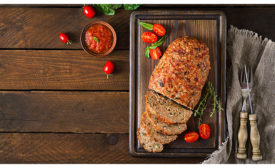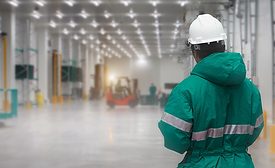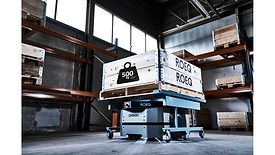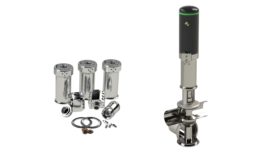Home » Publications » Food Engineering
Food Engineering
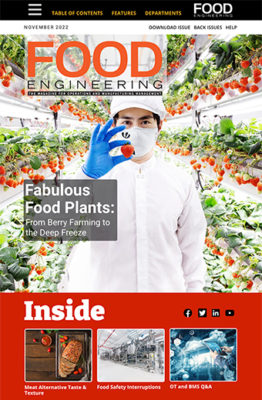
2022 November
Cover Story
Back to TopAmericold’s facility in Dunkirk, N.Y., was built with LEED certified energy efficiency in mind, and Oishii’s vertical strawberry farm is opening doors for a different variety of vertically farmed produce.
Read More
Feature Articles
Back to TopIntegrating Operations Technology with Building Management Systems 101
When it comes to integrating automated systems within a facility (or with the facility itself), everyone has to start somewhere.
November 15, 2022
Smartphones on the plant floor: BYOD or company issued?
Smartphones and other devices make accessing IT/OT systems on the plant floor easier, but the use of personal devices may cause security and legal problems.
November 22, 2022
Be Prepared For Food Safety Interruptions
“If there is a possibility of several things going wrong, the one that will cause the most damage will be the one to go wrong.” (Attributed to Murphy)
November 9, 2022
Achieving a Full Sensory Experience
According to a white paper by Innophos, mechanical processes alone aren’t enough for plant-based alternatives to fully replicate the sensory experience of animal-based protein.
November 11, 2022
Departments
Back to TopPlant Operations
Disruptions are a Reality: Plan Ahead
Having contingency plans for your facility, before disaster strikes, is essential to maintaining production capacity and negating devastating effects of natural disasters, epidemics, supply-chain crises, and other potential disruptions.
November 21, 2022
Plant Operations & Engineering
Tech Update: Freezing & Cooling
Several freezing solutions are available to meet specific applications.
November 23, 2022
Plant Operations
Reducing Manufacturing Plant Downtime
Remote alarm notification software more critical than ever.
November 17, 2022
Sustainable, “Plug-and-Play” Shrimp Farming Sets up Anywhere Food Engineering
Shrimp farming comes with complications from contamination to environmental impacts. Atarraya has create d an alternative method to farming shrimp through automated aquaculture. The company’s Shrimpbox aims to be a modular and scalable solution to traditional shrimp farming.
November 8, 2022
Products
Back to TopElevate your expertise in food engineering with unparalleled insights and connections.
Get the latest industry updates tailored your way.
JOIN TODAY!Copyright ©2024. All Rights Reserved BNP Media.
Design, CMS, Hosting & Web Development :: ePublishing






